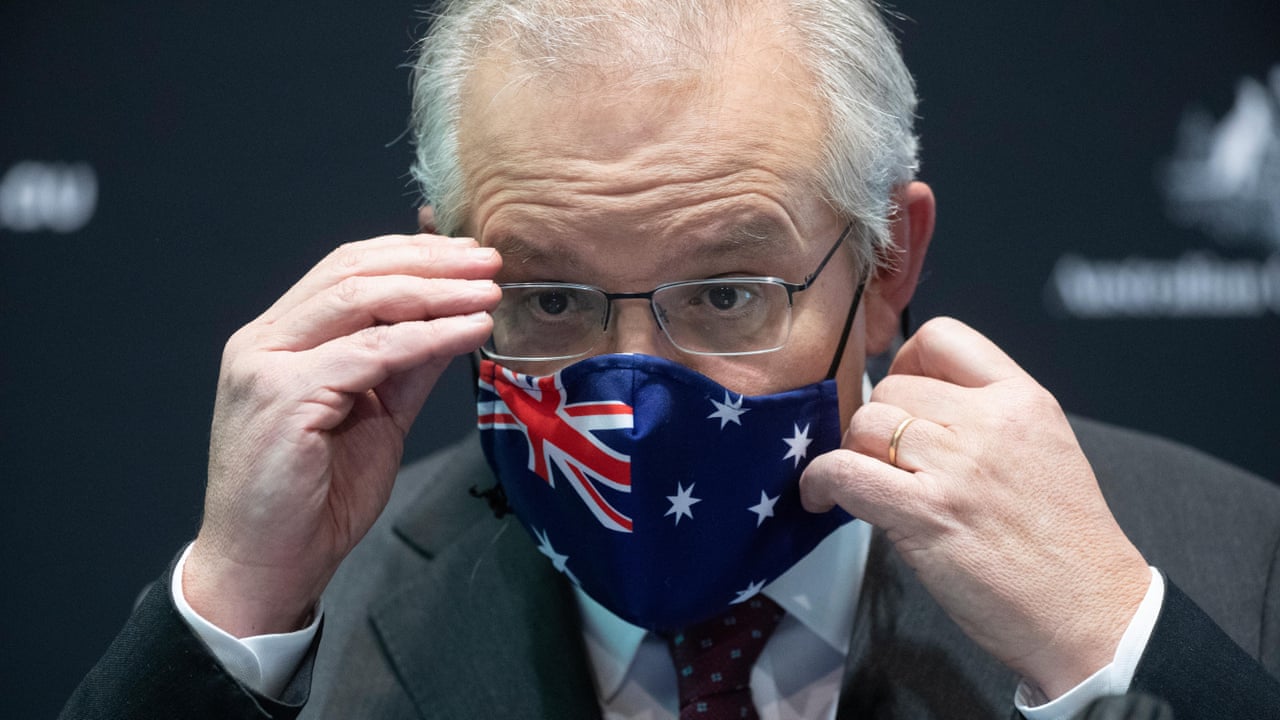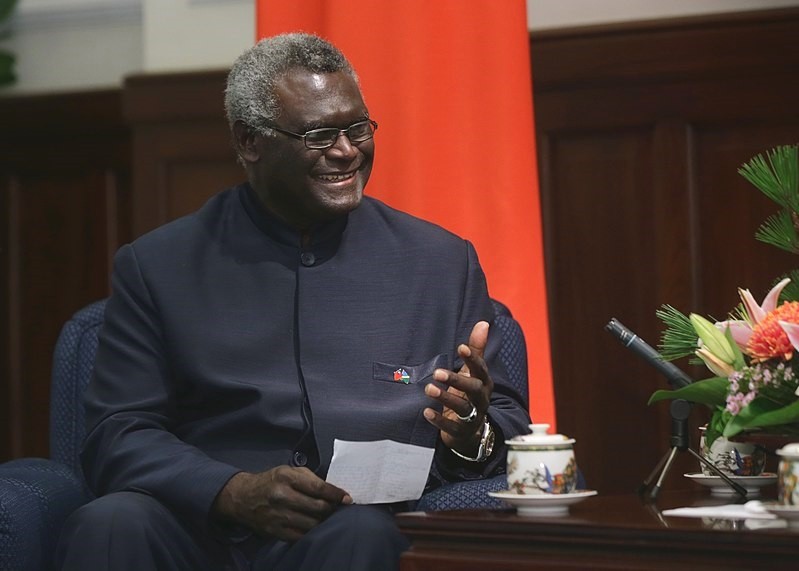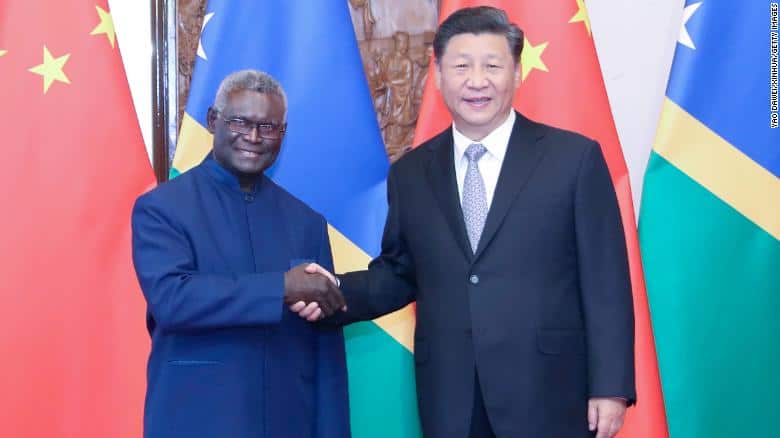By Dr Wadan Narsey
Australia has been jolted out of its self-declared “vuvale” (family) complacency in its relations to the Pacific.
Following the recent political fall-out in Australia because of the China-Solomon Islands signing of a Treaty, and regardless of who wins the forthcoming elections tomorrow, there is now the possibility of a new era strengthening the ties between Australia (and New Zealand) and Pacific Island Countries.
The Solomon Islands Debacle
In recent months, Australian politics has been in turmoil because of the signing of a treaty between Solomon Islands and China.
There is a clear perception in all sides of the political spectrum in Australia that this treaty, whatever it has in store for the future presence of China in the Solomon Islands, weakens Australia’s geostrategic position in the Pacific and allows China a “foothold” which could conceivably be used for military purposes in the future.
This military possibility has been denied by the Solomon Islands Government, which sees the West’s concerns as paternalistic and interfering with the Solomon Islands’ sovereignty and its right to diversify is relationships with any international powers, including China.
Solomon Islands sees China as a new and strengthening development partner in aid, infrastructure development and investment, especially through links with China’s Belt and Road initiative.
The U.S. and Australia both sent delegations to convince the Solomon Islands to not sign the treaty- to no avail. So what now for Australia and NZ?
The Morrison Government repeated all its previous rhetoric of their strong ties to their Pacific through their “vuvale” or family, a concept that most Pacific Islanders saw as quite empty given the usual treatment of Pacific Islanders by Australia.
But there is a new ball game in town from the 2022 Elections jousting between the major political parties. The Australian Labour Party has announced a set of new initiatives to strengthen Australia’s position in the Pacific, and some may indeed do so.
The Australian Labor Party’s reaction
Polls currently predict the ALP to win the election, either outright or with the likely support of the Greens and several Independents.
It is important for the PICs to note that ALP’s Shadow Finance Minister, Penny Wong, described the Solomons-China signing as the worst foreign policy blunder by the Morrison Government since the end of WWII, while admitting that Australia could not compete with China in doling out aid funds.
Rather, she saw the need for Australia to strengthen its relationships on more fronts than aid.
The ALP promised to significantly boost its engagement with the Pacific countries through a number of programs, some cosmetic, some useful, and some promising real, scaled-up benefits for Pacific countries and peoples over the long term:
* Australia Pacific Defence School to provide training programs for PIC defence and security forces, building on existing programs and initiating new ones.
* strengthen Pacific Maritime Security: help the Pacific tackle illegal fishing in the region
* boosting development assistance through strengthening existing projects and new projects: such as “economic growth, health, education, water, sanitation and hygiene needs, climate change adaptation and resilience, gender equality and support for people with disability”.
* a Pacific Climate Infrastructure Financing Partnership: to support climate-related infrastructure and energy projects in Pacific countries and Timor-Leste.
* Indo-Pacific Broadcasting Strategy: to boost Australian content and to project Australian identity, values, and interests to the Indo-Pacific region through the ABC and PacificAus TV, in consultation with the DFAT.
* Bi-partisan parliamentary visits supposedly “to demonstrate to our Pacific family that stronger Pacific partnerships are in Australia’s national interest”.
But probably the two most important initiatives promised are:
* Reforming and expanding the Pacific Australia Labour Mobility Seasonal Worker Program, which proved their immense benefit to Australia during the horrendous labour shortages caused by COVID. Among the new initiatives are 4 year visas which allow the workers to bring their partners and children.
* and perhaps most importantly, boosting Pacific permanent migration to Australia.



All driven by Australia and its needs
There is little doubt that critics in the Pacific countries will tend to see these initiatives all driven by and controlled by Australia, even if the benefits are real to PIC people and will certainly enhance Australia’s standing in the Pacific.
But there is no real formal agreement per se between Australia and the PICs as equal partners, even if the reality will always be that Australia will dominate any agreement that is reached.
There is surely a lesson to be learnt from developments in Europe, where the Russian invasion of Ukraine has encouraged Finland and Sweden to consider formally joining NATO: declarations of friendship and co-operation with more powerful neighbors are just not enough in this modern era of super-power rivalry.
In the Pacific, proud declarations by Australian PM Morrison of his appreciation of the Pacific “vuvale” were simply not enough to dissuade the Solomon Islands Government (or any PIC Government for that matter) from signing a Treaty with China.
Why has there been no formal treaty or agreement between Australia, NZ and the PICs which might have forestalled any PIC Agreement with any other super power?
I say “might” because China is destined within the next ten years to be undoubtedly the largest economy in the world by a large margin over United States, a more important trading partner, source of foreign investment, and probably aid of all kinds (as already seen in the Solomon Islands) than US or Australia has ever been, or will be?
So the “elephant in the room” question has to be asked by those with a little bit of historical memory: why have Australia (and NZ) failed to establish a formal PACER Plus Agreement which could have included all the above ALP initiatives and more?
Remember Pacer Plus?
It is extraordinary that virtually none of the current political commentators on the Solomon Islands-China fiasco have pointed to not just the Morrison Government, but all Australian governments for the last twenty years (including the ALP) “dropping the ball” in foreign policy in the PICs.
During the last twenty years, there were many possibilities for Australia and NZ to develop a tight PACER (later PACER Plus) Treaty which would have been a formal agreement, a stepping-stone to a Pacific Economic Union, very much like the European Union or Community.
Sadly, the negotiations were driven by pure trade issues and the consequence of EPAs with the European Union (which provided the funds for the consultants), and this author himself contributed a study to Forum Secretariat on the (significant) revenue implications for PICS of reducing their tariffs to Australian exports.[1]
Sadly, there was an outright refusal by Australia and NZ to include labor mobility and development co-operation in the main agreement, which led to PNG and Fiji refusing to sign.
The smaller PICs, including the Solomon Islands, did sign, but the perceived benefits were not enough to discourage Solomon Islands from signing the Treaty with China, despite Australia’s belated request.
It is ironic therefore that the new unilateral initiatives promised by the ALP mirror what PNG and Fiji were requesting in the first place.
In 2004, this author argued in an article in the Pacific Economic Bulletin that PICs stood to gain far more from negotiating PACER than EPAs with the EU, especially in export of unskilled labour to Australia and NZ, and broader development benefits.[2]
Between 2006 and 2014, this author wrote any number of articles pleading with Australian and NZ to not exclude Pacific workers (Islands Business, October 2006); need for workers in crippled Queensland sawmills (Islands Business Oct. 2010); need for Pacific nurses to follow Captain Cook to Australia (Island Business May 2012); nor to practice rugby colonialism (any number of Fiji Times articles). There was even article ten years ago for donor dialogue driven by US and Australia (as a meeting hosted by PIDP in Honolulu) to include China (Islands Business, March 2011).
But perhaps a most cogent set of argument relevant for today’s situation was in NZ journal Pacific Connections, for a visionary South Pacific Community led by Australia and NZ[3] where the author argued:
“I believe that it is possible for Australia and New Zealand to foster progress on a number of key economic and social fronts, with the jigsaw pieces falling gradually into place, over time, delivering concrete development benefits to the FICs at every stage, and making legal agreements like PACER an inevitability. But that would require Australia and New Zealand to take responsibility for addressing some of the fundamental causes of underdevelopment and lack of economic growth in the FICs.”
I outlined in detail (virtually all in the ALP Manifesto for their new initiatives in PICs):
* large donor investment in PIC infrastructure (roads, utilities, education, medical services)
* joint investment projects in World Trade Organization (WTO)-compatible industries in FICs, focusing on tourism, timber, marine resources and service industries (like retirement homes and call-center industries) to accelerate economic FIC growth.
* And with there now being no doubt about the critical value of remittances to FIC foreign exchange reserves and development, where is the generous access for unskilled FIC labor to meet unfilled demand areas in Australia and New Zealand?
* co-operation on employment of military personnel (army and navy) employment including navy surveillance of marine resources.
There were also recommendations on:
* assisting climate change refugees from Tuvalu and Kiribati
* integration through Super Rugby and arts
It is ironic indeed that there is now integration in Super Rugby, whose enormous significance has not yet registered yet on Australian politicians.
I concluded then that “the oceanic FICs would come to be treated like any remote rural community in Australia or New Zealand, whose skilled human resources continue to flow out to Sydney or Auckland, but they remain civilized rural outposts, with their respective governments still maintaining a full range of basic services.
Just as the individual European countries derive greater strength to weather crises by being part of a wider European Community, so also might Australia and NZ derive greater strength by being part of a wider Pacific Community including the FICs. But for that to happen, Australian and New Zealand political leaders need to have a long term vision of Pacific Islanders as one with Australian and New Zealand citizens, in all aspects of human endeavor: economic, political and social. If the next twenty years are to be a major improvement from the last twenty years.”
These words ring true today as they did thirteen years ago.
Australia and NZ together with Forum Secretariat, face the great possibility of making all this a reality through a revised and strengthened PACER Plus Agreement (including geostrategic elements) which would be so valuable to PICs that none would consider any destabilising treaty with any super power external to the Pacific.
[1] A negotiating framework for EPA negotiations with the EU and fiscal reform issues for Pacific ACP countries. Report for the Forum Secretariat. 2003
[2] “PICTA, PACER and EPAs: weaknesses in Pacific island countries’ trade policies”. Pacific Economic Bulletin, Vol.19 No 3. 2004.
[3] Pacific Connections, April/May 2009, “Alternatives to legalistic masochism”
